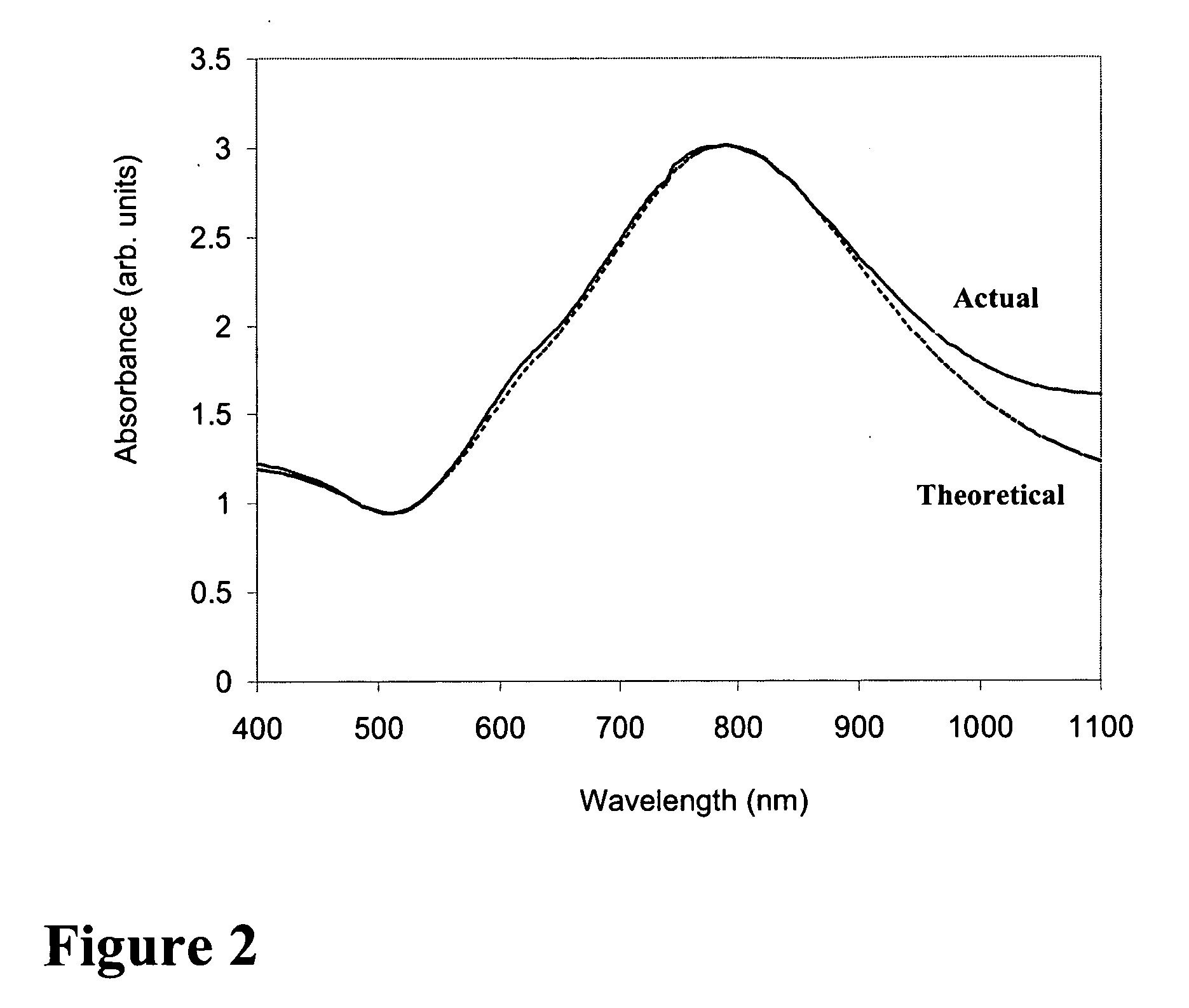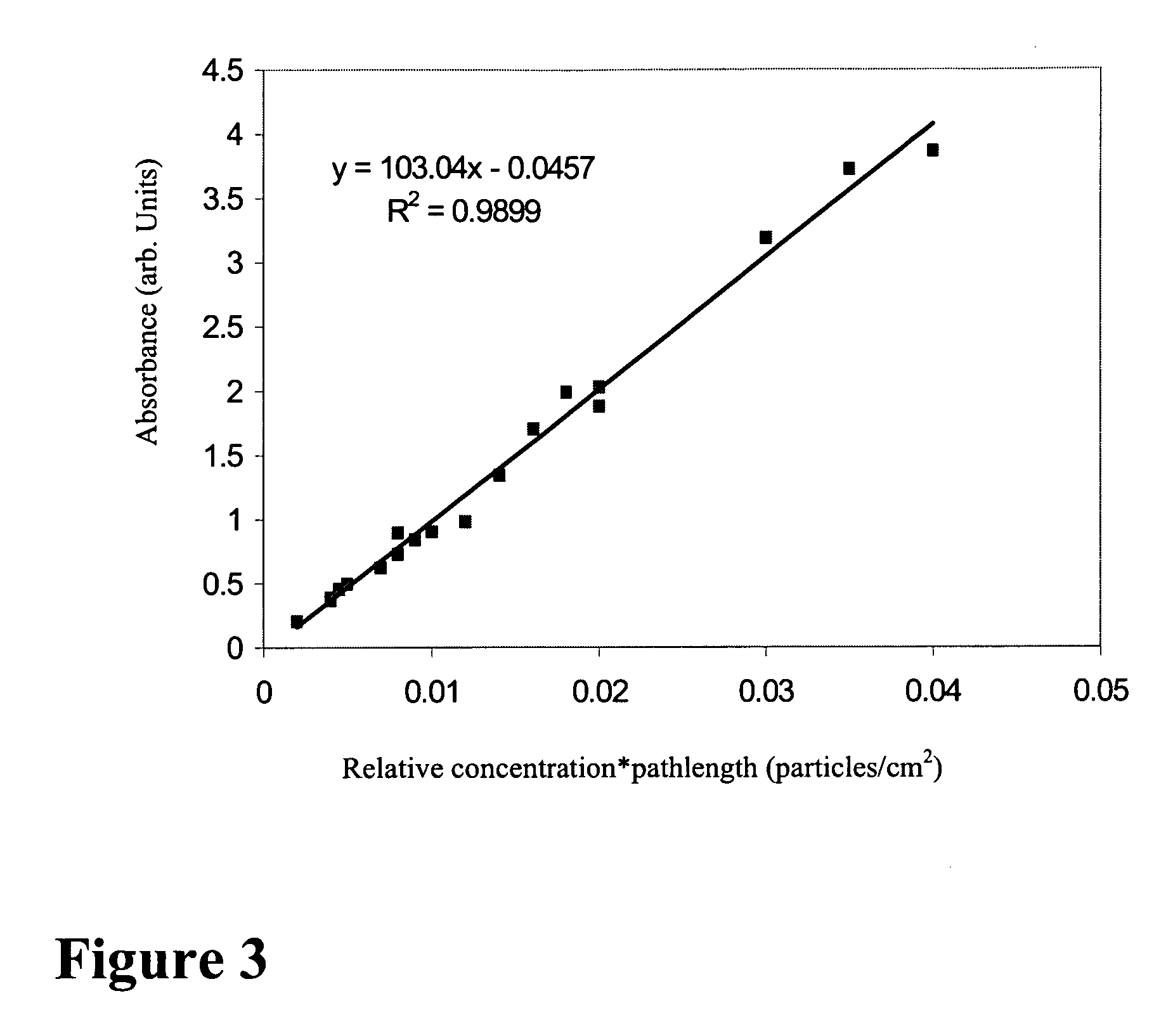Plasmon resonant based eye protection
- Summary
- Abstract
- Description
- Claims
- Application Information
AI Technical Summary
Benefits of technology
Problems solved by technology
Method used
Image
Examples
Embodiment Construction
[0037] It has been found that by incorporating nanoshells in the manufacture of a contact lens, various wavelengths of energy, and in particular, near-infrared radiation wavelengths, can be filtered or otherwise blocked from passing through the lens.
[0038] Nanoparticles and materials formed therefrom, referred to herein as nanomaterials, constitute an emerging subdiscipline in the chemical and materials science arts. While there is no universally agreed upon definition of when a small particle qualifies as a nanoparticle, particles with at least one dimension (d)≦100 nm are generally considered nanoparticles. As used herein, nanoparticles includes particles with one dimension less than a micron. Further, in the preferred embodiment, the most desirable nanoshells are >>100 nm. In any event, those skilled in the art generally acknowledged that various properties of a material change as the particle size approaches molecular dimensions. It is these unique properties of the nanomateria...
PUM
| Property | Measurement | Unit |
|---|---|---|
| Fraction | aaaaa | aaaaa |
| Fraction | aaaaa | aaaaa |
| Fraction | aaaaa | aaaaa |
Abstract
Description
Claims
Application Information
 Login to View More
Login to View More - R&D
- Intellectual Property
- Life Sciences
- Materials
- Tech Scout
- Unparalleled Data Quality
- Higher Quality Content
- 60% Fewer Hallucinations
Browse by: Latest US Patents, China's latest patents, Technical Efficacy Thesaurus, Application Domain, Technology Topic, Popular Technical Reports.
© 2025 PatSnap. All rights reserved.Legal|Privacy policy|Modern Slavery Act Transparency Statement|Sitemap|About US| Contact US: help@patsnap.com



